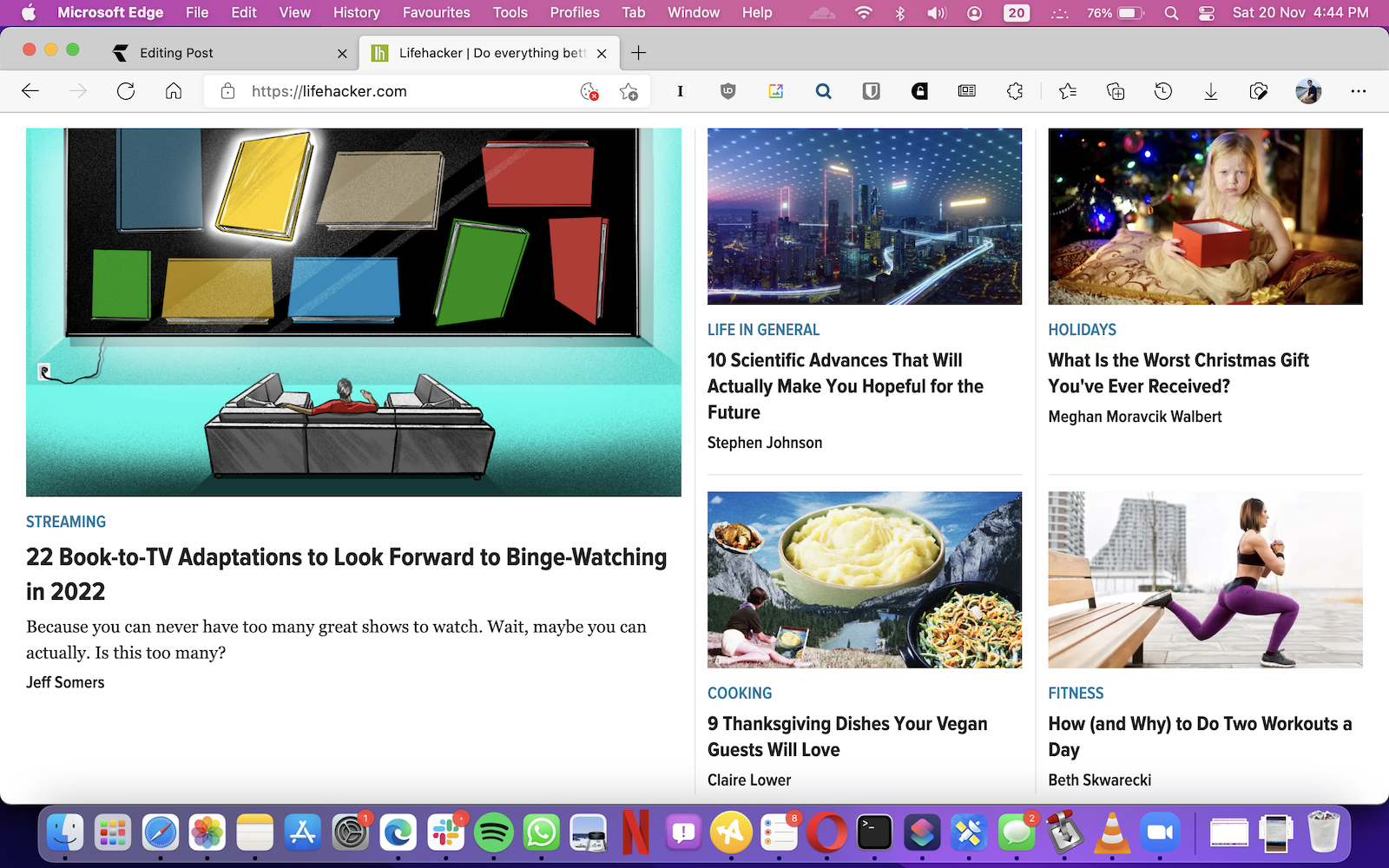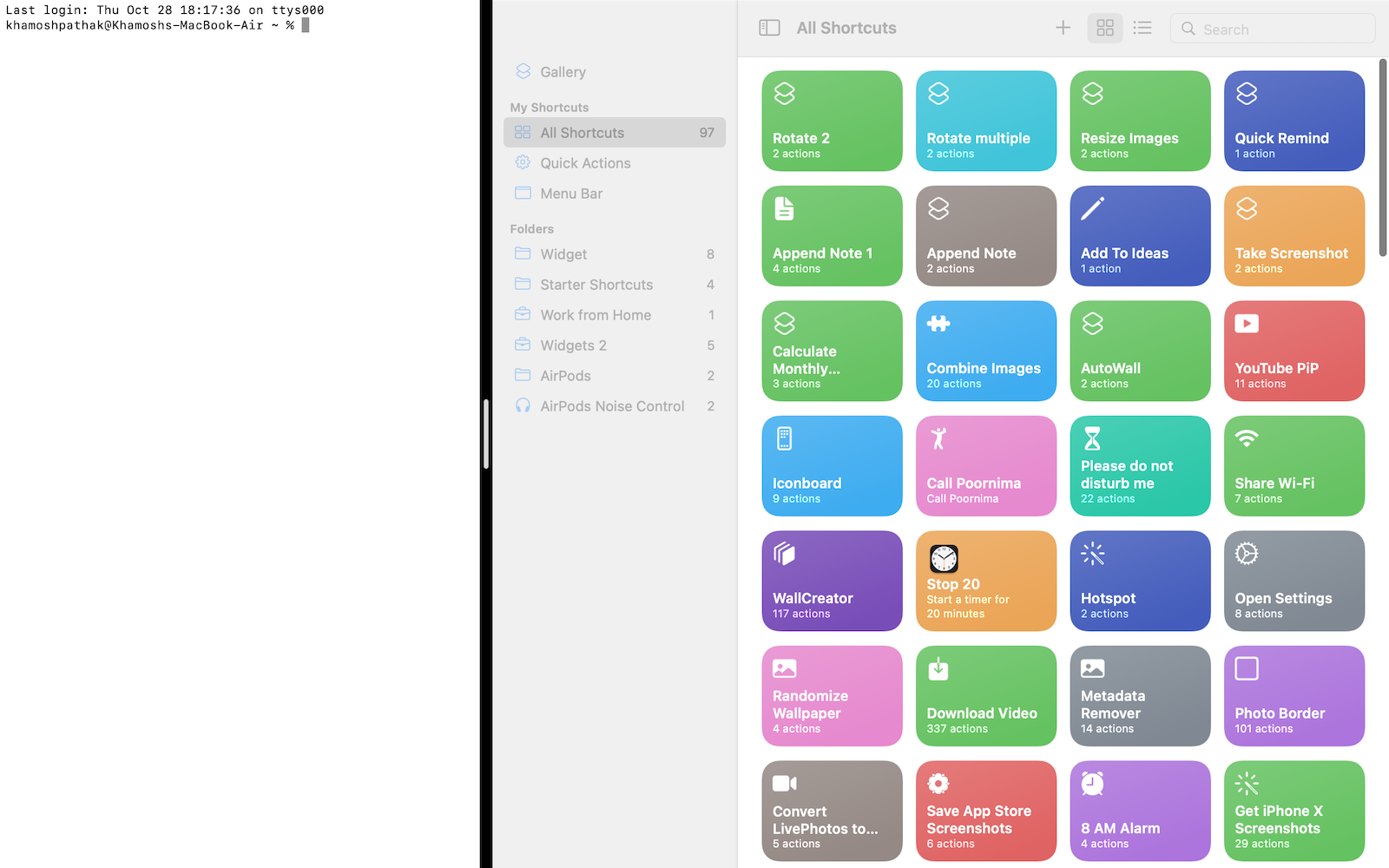Traditionally, Mac’s window management features have lagged behind Microsoft Windows. And with Windows 11’s new Snap Layouts feature, it might seem like Windows is racing forwards yet again — but that’s not entirely the case. The Mac offers pretty good window management features; they’re just not as obvious as the Windows options.
To start with, you can easily move a window to the left of the screen, or you can start a Split View with two different windows. And the things that macOS can’t do, there’s a third-party app to help. Let’s walk through all the Mac window management features you can try out.
Zoom into a window without going fullscreen

You are (hopefully) already well aware of the green Maximise button in the title bar — and that when you click it, the app goes fullscreen and takes up the entire Desktop on its own, with the menu bar and the Dock disappear. Generally, you’d probably rather make the current window as big as possible without going fullscreen, though.
That’s where the hidden Zoom feature comes in: You can activate it by simply double-clicking the app’s title bar. Alternatively, you can press the Option key while hovering over the green Maximise button. Here, choose the “Zoom” option.
Move a window to the left or right side of the screen

There’s another hidden feature that lets you move the current window to the left or the right half of the screen in the current desktop itself (we’ll get to Split View in the next section).
Hover over the green Maximise button while pressing the Option key. Here, choose the “Move Window to Left Side of Screen” or the “Move Window to Right Side of Screen” option, depending on your needs.
Once a window is moved to the left or the right side, you can get it back in two ways. First, you can double-click the empty part of the title bar. Or you can hover over the green Maximise button while holding the Option key. From here, choose the “Revert” option.
Start a Split View with two windows in fullscreen mode
Mac’s Split View feature lets you use two app windows side-by-side, both in full-screen mode. The windows become paired in their own desktop that you can switch between using a four-finger trackpad gesture.
This works best in the set-it-and-forget-it kind of scenario. You can pair two of your most-used windows, like Mail and Safari, and then just forget about it.
To get started, find the first window in question, hover over the green Maximise button, and choose the “Tile Window to Left of Screen” or “Tile Window to Right of Screen” option. This app will go to one side of the screen while the other side will show all available windows that support the Split View feature. Choose a window from the list, and your Split View is up and running.

You can now use the divider (shown above) to change the width of both windows.
Quickly replace any app in Split View
This is a new feature that’s supported in macOS Monterey and higher. Split View pairs don’t have to be forever; there might be times when you want to switch a window out for something else. Go to the window you want to replace, hover over the Maximise button, and choose the “Replace Tiled Window” option, and select an available window.
When you want to exit Split View, click the green Maximise button on either one of the windows to move it back to its previous Desktop. The remaining app will now be fullscreen; click the green Maximise button from the title bar to bring that app back to its previous Desktop, as well.
Merge all open windows into tabs
Many of Apple’s own apps now support tab view. This is really useful in apps like Finder and Mail where it’s easy to lose track of multiple windows. If you have too many windows open, you can use the “Merge All Windows” feature from the “Window” option in the menu bar to turn all windows into tabs.
Get more window management features on Mac using Magnet

If you don’t like using Split View, but still want to use multiple windows on the same Desktop, try the Magnet app. For $US7.99 ($11), this app will let you divide and arrange windows in neat sections of the screen.
If you’re coming from Windows, you’ll appreciate that Magnet has the same window-snapping feature. Drag a window to the left edge and it will take up the left half of the screen. You can divide windows into quadrants, thirds, and more.
Magnet can also be controlled using keyboard shortcuts, or the menu bar utility.

Leave a Reply
You must be logged in to post a comment.